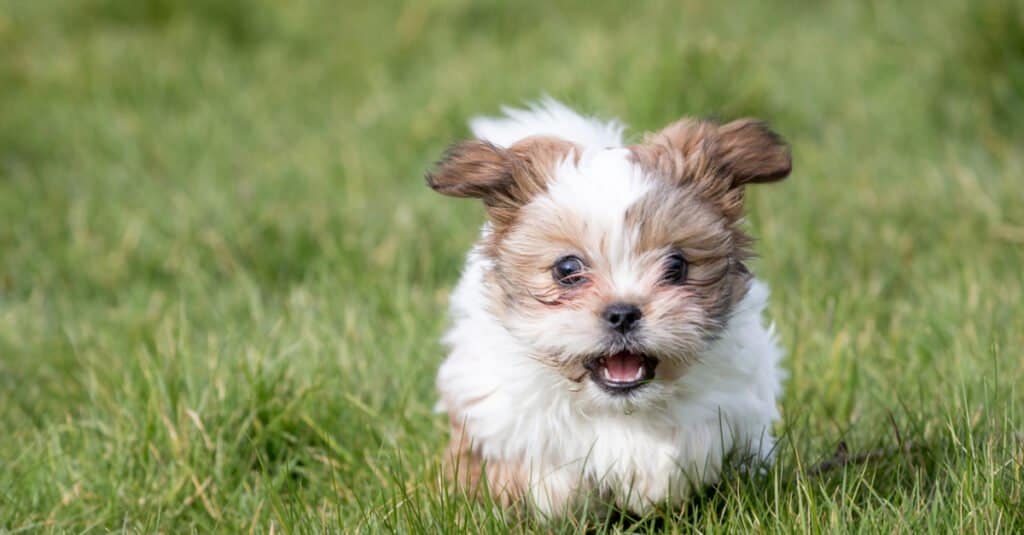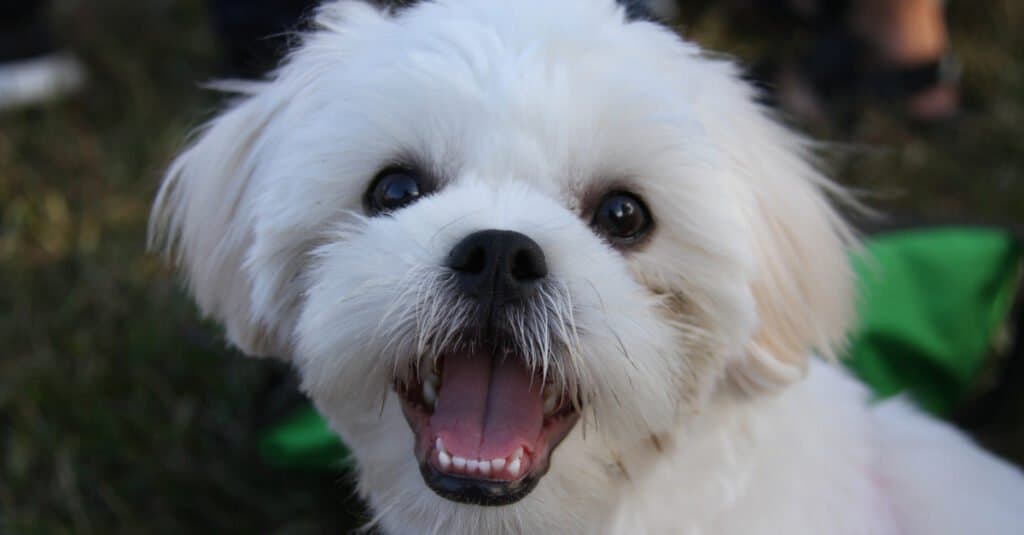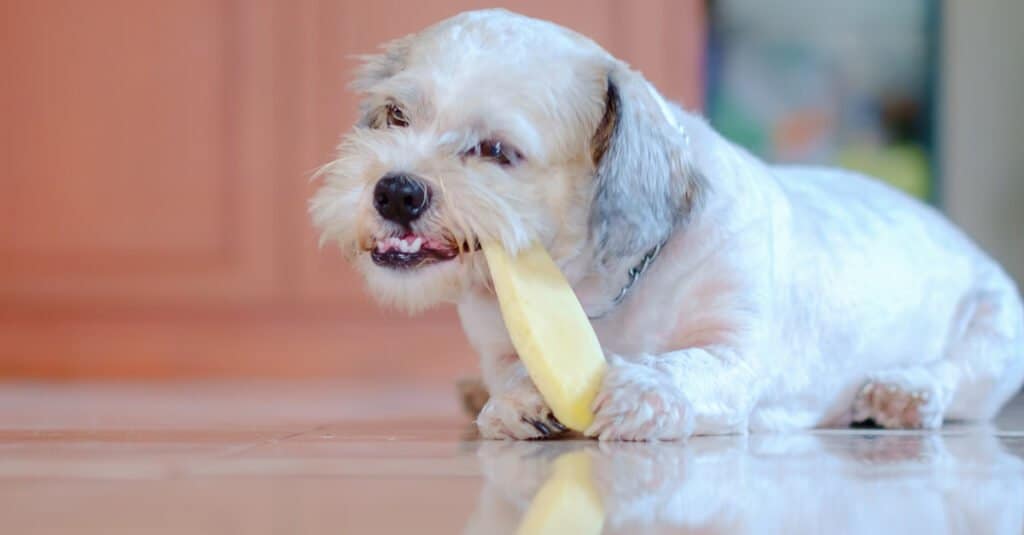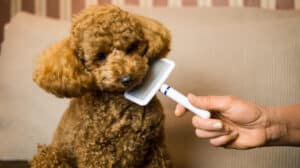Apart from their sweet, submissive, and playful nature, Shih Tzus are one of the best dog breeds to make pets because they also have a long lifespan. They rank as second for dogs with the longest life spans, following Toy Poodles. Shih Tzus can live from 10 to 16 years, with some cases reaching 18 years, making them great human companions. However, like other dog breeds, Shih Tzus are susceptible to diseases, especially dental health issues, so extreme care is required to help these fur babies reach such old age. Shih Tzu teeth sport sharp canines, and when these canines are just erupting at 5 to 6 weeks of age, the puppy’s nip can sting and even draw blood.
Shih Tzus are well-known for their short snout and ever-growing furry coat. They are a very popular dog breed, having originated as emperors’ companions in China. They are adored as one of the cutest and most adorable dogs on the planet. Shih Tzus are known to be loyal and gentle. They rarely bite, and they are best to be kept as pets because they are friendly to kids. Shih Tzus undergo different stages when teething, so it is crucial to know everything about their teeth so pet owners can avoid accidental sharp nips and dental health problems along the way.
What Kind of Teeth Do Shih Tzus Have?

Shih Tzus have sharp canine teeth which can pierce through flesh.
©Daz Stock/Shutterstock.com
The Shih Tzu has a heterodont set of teeth that includes incisors, canines, premolars, and molars. Like all dog breeds, Shih Tzus are also diphyodont. This means they only grow two sets of teeth throughout their lifetime. A few weeks after they are born, a deciduous set of teeth or milk teeth will erupt, which will be replaced by permanent ones after a few months.
Shih Tzu’s canine teeth are sharp, as they should be, which can pierce through flesh. However, since Shih Tzus are not known to be aggressive breeds, they only use these canines for eating and playing. There are times when the Shih Tzu can nip or chew on its owner’s fingers as a form of play, and their sharp canines can sometimes rapture the skin, especially when they are teething.
How Many Teeth Do Shih Tzus Have?

A Shih Tzu has 42 teeth.
©TracyUnicorn/Shutterstock.com
Despite the Shih Tzu’s tiny mouth, it hosts many teeth. An adult Shih Tzu has 42 permanent teeth – 12 incisors, 4 canines, 16 premolars, and 10 molars. Once they start teething, they will first grow a set of 28 baby teeth. These teeth (incisors, canines, premolars) will fall out as the Shih Tzu ages and will be replaced with permanent ones. The molars are permanent as soon as they erupt and do not emerge with the deciduous ones.
Shih Tzu Teething
Teething refers to the eruption of a pet’s baby teeth. Shih Tzu’s baby teeth emerge in different stages. The incisors arrive at 3 to 4 weeks of age, and the canines start to erupt at 5 to 6 weeks, while the premolars, the first set of molariform teeth you will see in a Shih Tzu puppy, will begin showing at 6 weeks. These teeth will then fall out at different stages and will be replaced with permanent teeth.
The Shih Tzu’s permanent incisors or front teeth will emerge at around 3 to 5 months, while its permanent canine teeth will erupt at 4 to 6 months. Permanent ones will replace the premolars by 4 to 5 months of age, and the molars will finally erupt at 5 to 7 months.
However, it is common for Shih Tzus to retain their baby teeth even after the permanent teeth come out. In this case, a veterinarian should remove the retained milk teeth so they won’t get in the way of food.
For pet owners, you must be well-aware of the first signs of Shih Tzu teething. These signs will include sore gums, flushed cheek, constant chewing and gnawing, and rashes on its face.
What Do Shih Tzus Use Their Teeth For?

Shih Tzus often use their cheek teeth to crush and grind their food.
©iamnoonmai/Shutterstock.com
Canids naturally have long and sharp canine teeth to help catch and tear their food. However, since domesticated dogs like the Shih Tzu have evolved to eat pet food and pre-sliced meals, they rarely use these canines in eating. Shih Tzus often use their cheek teeth in crushing and grinding dog food, and sometimes they utilize their incisors and canines too when gnawing meaty meals. Shih Tzus naturally love to chew, which also sharpens their teeth.
The Shih Tzu’s incisors help grab and chew things and groom their fur, while their canines are useful for gripping and tearing. Shih Tzus use their premolars for gripping up food, while they use their molars in breaking and grinding food into tinier, more digestible pieces.
Common Dental Issues in Shih Tzus
Since Shih Tzus have a lot of teeth trying to fit inside their teeny tiny mouth, they are vulnerable to many dental problems. Caring for a Shih Tzu’s dental hygiene is not only caring for its teeth but its overall well-being too. Bad dental hygiene can affect a Shih Tzu’s mouth and even reach its body organs.
Plaque or Tartar Build-up
Plaque mixes with bacteria after a Shih Tzu eats its meal. After 24 hours, the plaque and bacteria mix-up will begin to harden as they combine with the dog’s saliva. Tartar, on the other hand, builds near the gums, which painfully pushes the gums away from the teeth’ roots. However, the tartar build-up does not stay in the mouth; instead, it gets soaked up by bloodstreams and can travel to vital organs.
Underbite or malocclusion
The term “canine bite” refers to how the dog’s jaws fit together when closed. It is a common dental problem for Shih Tzus to have an underbite, which means that their lower jaws are longer than the upper jaw, causing the teeth on both jaws not to touch, thus an “underbite.” This is a common abnormality in purebred Shih Tzus and can cause problems. This can be fixed with tooth extractions or braces.
The photo featured at the top of this post is © TracyUnicorn/Shutterstock.com
Ready to discover the top 10 cutest dog breeds in the entire world?
How about the fastest dogs, the largest dogs and those that are -- quite frankly -- just the kindest dogs on the planet? Each day, AZ Animals sends out lists just like this to our thousands of email subscribers. And the best part? It's FREE. Join today by entering your email below.
Thank you for reading! Have some feedback for us? Contact the AZ Animals editorial team.






